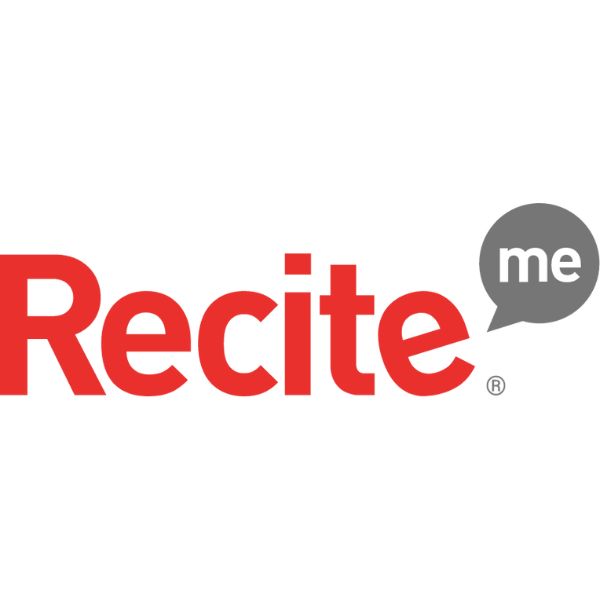Insights
INSIGHTS
All Topics
How tech innovation improves accessibility
We look at current and future developments in digital accessibility
Digital accessibility is important for charities. It’s about removing barriers so everyone can use and engage with your online content, information, and services.
Prioritising digital accessibility will help you to build more engagement with your charity’s work from people who may not have previously been able to access your information online. This includes people with physical disabilities, such as those with hearing and visual impairments, conditions like multiple sclerosis and cerebral palsy, and neurodiverse people.
Charities need to prioritise digital accessibility as it’s a legal requirement in the UK. The Equality Act 2010 says that websites and apps must be accessible to everyone regardless of their abilities. Websites also need to comply with the Web Content Accessibility Guidelines (WCAG) which set out how to make web content more accessible to disabled people.
But it’s not just about being compliant. Digital accessibility is about embedding ethical and inclusive business practices into your organisation and doing the right thing for people.
Technology is evolving which means the tools for improving digital accessibility are advancing. We look at some of the technology that may help organisations to improve digital accessibility now and in the future.
Using artificial intelligence for accessibility testing
A trend to look out for is artificial intelligence (AI) being used for accessibility testing. Accessibility testing is when you review digital products – such as websites, applications and software – to make sure they can be used by disabled people.
This gives developers feedback and suggestions for how they can improve things. So, removing barriers that could prevent people with visual, auditory, cognitive or motor impairments from using digital content.
Accessibility testing has traditionally been carried out manually by people who understand different disabilities and assistive technologies. This is a time-consuming process but is recommended nonetheless by the Web Accessibility Initiative.
It is predicted that using AI will transform accessibility testing as it will speed up the process. This is because generative AI algorithms understand accessibility guidelines, WCAG, and what different people need.
Even so, in 2024, experts still emphasise the need for a “human-centred” approach.
Using assistive technologies to improve people’s experiences of digital content
Assistive technologies, like screen readers, have been around for a long time – but are likely to become more advanced by offering enhanced features and capabilities. Smart glasses and other wearable technology may also advance. For example, these could help people with visual impairments to access real-time information in daily life.
Using progressive web apps so everyone can access online content
Progressive webs apps – websites that look and act like mobile apps – are set to improve digital accessibility. For example, they have a responsive design that adjusts the content for different screen sizes. This makes it easier for people to read the content.
They also have automatic updates and allow people to install straight from the browser. This will make things more straightforward, as you don’t have to open an extra tab or application when an update or installation is needed.
Also, a standard website doesn’t allow you to access an application from the home screen, but a progressive web app does. The app icon will be on your device once you have installed the software.
Using VR and AR to support people with disabilities
Virtual reality (VR) and augmented reality (AR) are being used to develop gesture and motion controls. These could be used to help people with physical disabilities to use digital content.
AR is set to overtake VR with its capabilities. While VR puts you into a virtual world, AR enhances the world around you, using graphics, GPS data, audio and video. This may be able to help people with sensory impairments to use applications by enabling them to zoom in on objects or text. It could also provide audio descriptions to support people with visual impairments.
Using advanced voice navigation to help people with disabilities
One trend to look out for is voice navigation, which is set to become more advanced using natural language processing, AI, and voice assistants. People will be able to use voice commands to interact with digital content.
Using GPS watches to monitor health and location
Another trend is GPS-tracking watches. These can support many people, including those with cognitive impairments, dementia or autism, and their carers, to monitor their health and security. The watches offer GPS tracking and the ability to monitor someone’s health.
Find out more
Our 2024 Digital Inclusion Summit revealed how charities can help can make the digital world a safer, happier, more inclusive place, from improving access to digital devices to demystifying cyber security. Click here to watch the session recordings for free.
Our report, ‘Digital inclusion in the UK charity sector’, uncovers charity practitioners’ attitudes towards digital inclusion, including the challenges charities face in reaching out to service users and how they are making the most of the digital technology they use. Click the link in the orange box below to download the report.
Our Digital Inclusion Hub features regular articles, podcasts, and webinars to help charities reach across the digital divide. Click here to learn more.
Report: Digital inclusion in the UK charity sector
Kellie Smith
More on this topic
Recommended Products
25 Nov 2024by Joe Lepper
How charities support young carers
22 Nov 2024by Laura Stanley
Charity Digital Exchange: Grow your charity with AWS
Our Events
Charity Digital Academy
Our courses aim, in just three hours, to enhance soft skills and hard skills, boost your knowledge of finance and artificial intelligence, and supercharge your digital capabilities. Check out some of the incredible options by clicking here.




















